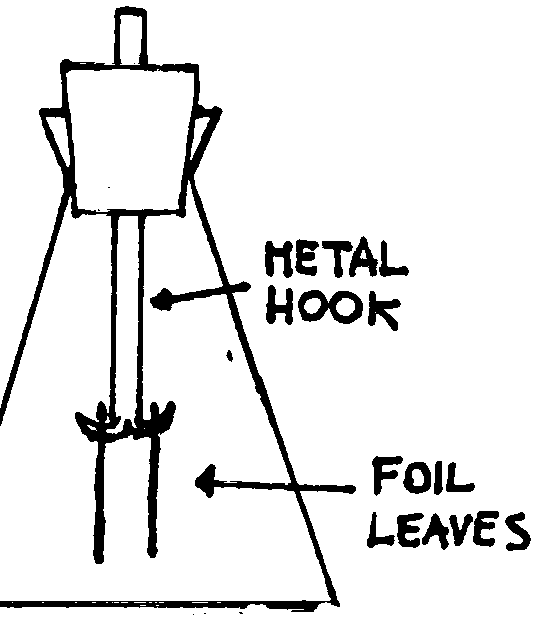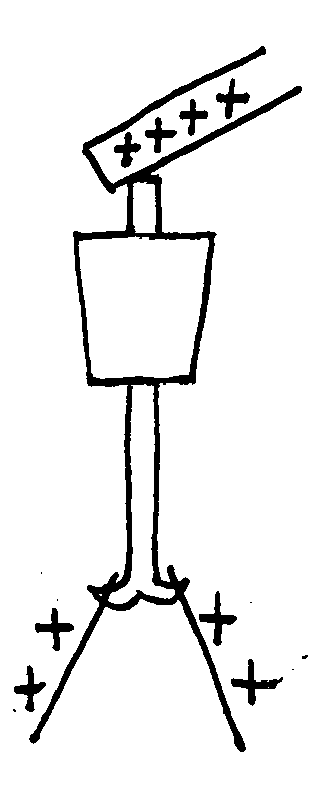.

If the leaves are uncharged they hang straight down (look at the figure above).
If we charge the electroscope by touching the metal hook with a charged object the leaves spread apart (figure below)

and taking off the rod the leaves stay in the same position (figure below).

After the electroscope has been charged, a like-charged object placed near the top of the hook makes the leaves spread farther apart. On the contrary an unlike-charged object makes the leaves come closer together (It can be explained by induction).


In this way the electroscope provides information about the quantity and quality of the charge.
A charged object kept in contact with the metal hook of the electroscope is responsible for the leaves spreading apart. The more charged the object, the farther the leaves spread apart. Furthermore, the behaviour of the leaves, when bringing a second charged object near the hook, reveals information about the type of charge. An increasing distance between the foil leaves means that the second object has the same type of charge as the previous; a decreasing distance of the foil leaves means that the second object has an opposite type of charge.